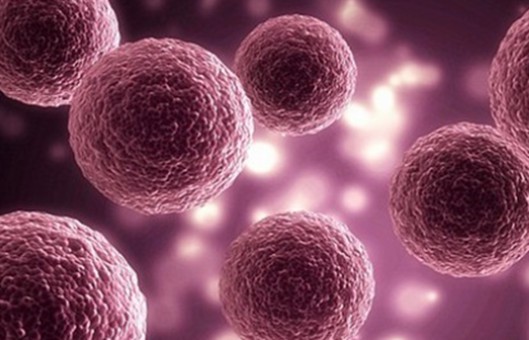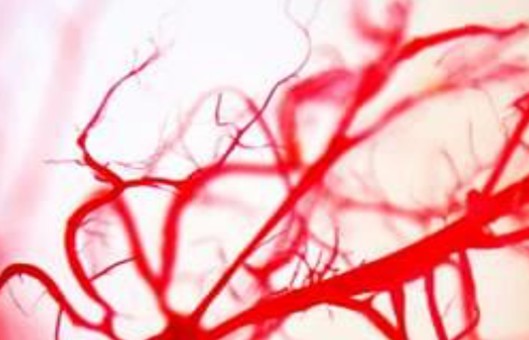Resazurin Assay Protocol
GUIDELINE
Resazurin is a cell-permeable redox indicator that can be used to monitor viable cell numbers with protocols similar to those utilizing the tetrazolium compounds. Resazurin can be dissolved in physiological buffers (resulting in a deep blue-colored solution) and added directly to cells in culture in a homogeneous format. Viable cells with active metabolism can reduce resazurin into the resorufin product which is pink and fluorescent.
The addition of an intermediate electron acceptor is not required for cellular resazurin reduction to occur, but it may accelerate signal generation. The quantity of resorufin produced is proportional to the number of viable cells which can be quantified using a microplate fluorometer equipped with a 560 nm excitation / 590 nm emission filter set. Resorufin also can be quantified by measuring a change in absorbance; however, absorbance detection is not often used because it is far less sensitive than measuring fluorescence. The resazurin reduction assay is slightly more sensitive than tetrazolium reduction assays and there are numerous reports using the resazurin reduction assay in a miniaturized format for HTS applications.
METHODS
Reagent preparation
- Dissolve high-purity resazurin in DPBS (pH 7.4) to 0.15 mg/ml.
- Filter-sterilize the resazurin solution through a 0.2 μm filter into a sterile, light-protected container.
- Store the resazurin solution protected from light at 4°C for frequent use or at -20°C for long-term storage.
Assay protocols
- Prepare cells and test compounds in opaque-walled 96-well plates containing a final volume of 100 µl/well. An optional set of wells can be prepared with medium only for background subtraction and instrument gain adjustment.
- Incubate for a desired period of exposure.
- Add 20 µl resazurin solution to each well.
- Incubate 1 to 4 hours at 37°C.
- Record fluorescence using a 560 nm excitation / 590 nm emission filter set.
Creative Bioarray Relevant Recommendations
- Creative Bioarray offers a wide selection of cell viability assays for drug screening and cytotoxicity tests of chemicals. We offer a variety of reagents for studying cell viability including fluorescent and non-fluorescent reporter dyes.
| Cat. No. | Product Name |
| CSK-XV001 | SuperQuick® Calcein AM Cell Viability Assay Kit |
| CSK-XV002 | SuperQuick® Live/Dead Cell Viability Assay Kit |
| CSK-XV003 | SuperQuick® Cell Viability Fluorometric Assay Kit |
| CSK-XV004 | SuperQuick® Live-Dead Cell Staining Kit |
NOTES
- Determine the optimal concentration of Resazurin and the appropriate incubation time through preliminary optimization experiments to ensure accurate and reproducible results.
- Follow the manufacturer's guidelines for storing and handling Resazurin reagents to prevent degradation and ensure their effectiveness.
- Validate the Resazurin assay with alternative assays, such as trypan blue exclusion or live/dead staining, to confirm the reliability of the viability measurements.
RELATED PRODUCTS & SERVICES
For research use only. Not for any other purpose.
Resources
- FAQ
- Protocol
- Cell Culture Guide
- Technical Bulletins
-
Explore & Learn
-
Cell Biology
- How to Handle Mycoplasma in Cell Culture?
- Strategies for Enrichment of Circulating Tumor Cells (CTCs)
- Enrichment, Isolation and Characterization of Circulating Tumor Cells (CTCs)
- Tips For Cell Cryopreservation
- How to Assess the Migratory and Invasive Capacity of Cells?
- What Cell Lines Are Commonly Used in Biopharmaceutical Production?
- STR Profiling—The ID Card of Cell Line
- Comparison of Several Techniques for the Detection of Apoptotic Cells
- What are the Differences Between M1 and M2 Macrophages?
- Mesenchymal Stem Cells: A Comprehensive Exploration
- Organoid Differentiation from Induced Pluripotent Stem Cells
- Quantification of Cytokines
- Multi-Differentiation of Peripheral Blood Mononuclear Cells
- Biomarkers and Signaling Pathways in Tumor Stem Cells
- IL-12 Family Cytokines and Their Immune Functions
- What are Mesothelial Cells?
- How to Scale Up Single-Cell Clones?
- Techniques for Cell Separation
- Contamination of Cell Cultures & Treatment
- Cell Culture Medium
- What Are Myeloid Cell Markers?
- Cryopreservation of Cells Step by Step
- Cell Cryopreservation Techniques and Practices
- Human Primary Cells: Definition, Assay, Applications
- How to Eliminate Mycoplasma From Cell Cultures?
- T Cell, NK Cell Differentiation from Induced Pluripotent Stem Cells
- Critical Quality Attributes and Assays for Induced Pluripotent Stem Cells
- What Is Cell Proliferation and How to Analyze It?
- Direct vs. Indirect Cell-Based ELISA
- Major Problems Caused by the Use of Uncharacterized Cell Lines
- Unveiling the Molecular Secrets of Adipogenesis in MSCs
- Tumor Stem Cells: Identification, Isolation and Therapeutic Interventions
- How to Decide Between 2D and 3D Cell Cultures?
- Isolation, Expansion, and Analysis of Natural Killer Cells
- Neural Differentiation from Induced Pluripotent Stem Cells
- Guidelines for Cell Banking to Ensure the Safety of Biologics
- Monocytes vs. Macrophages
- How to Detect and Remove Endotoxins in Biologics?
- Comparison of Different Methods to Measure Cell Viability
- What are PBMCs?
- How to Start Your Culture: Thawing Frozen Cells
- Circulating Tumor Cells as Cancer Biomarkers in the Clinic
- CFU Assay for Hematopoietic Cell
- Troubleshooting Cell Culture Contamination: A Comprehensive Guide
- CHO Cell Line Development
- How to Isolate PBMCs from Whole Blood?
- How to Isolate and Analyze Tumor-Infiltrating Leukocytes?
- Generation and Applications of Neural Stem Cells
- Stem Cell Markers
- Comparison of the MSCs from Different Sources
- T Cell Activation and Expansion
- Spheroid vs. Organoid: Choosing the Right 3D Model for Your Research
- Key Techniques in Primary, Immortalized and Stable Cell Line Development
- Cell-Based High-Throughput Screening Techniques
- Overview of Cell Apoptosis Assays
- Mastering Cell Culture and Cryopreservation: Key Strategies for Optimal Cell Viability and Stability
- Adherent and Suspension Cell Culture
- How to Maximize Efficiency in Cell-Based High-Throughput Screening?
- Understanding Immunogenicity Assays: A Comprehensive Guide
- What are White Blood Cells?
- What Are the Pros and Cons of Adoptive Cell Therapy?
- Role of Cell-Based Assays in Drug Discovery and Development
- Eosinophils vs. Basophils vs. Neutrophils
- Cultivated Meat: What to Know?
- Optimization Strategies of Cell-Based Assays
- 3D-Cell Model in Cell-Based Assay
- Immunogenicity Testing: ELISA and MSD Assays
- Optimization Strategies of Cell-Based Assays
- Immunogenicity Testing: ELISA and MSD Assays
- From Collection to Cure: How ACT Works in Cancer Immunotherapy
- Types of Cell Therapy for Cancer
- From Blur to Clarity: Solving Resolution Limits in Live Cell Imaging
- Live Cell Imaging: Unveiling the Dynamic World of Cellular Processes
- From Blur to Clarity: Solving Resolution Limits in Live Cell Imaging
- 3D-Cell Model in Cell-Based Assay
- Exploring Cell Dynamics: Migration, Invasion, Adhesion, Angiogenesis, and EMT Assays
- From Primary to Immortalized: Navigating Key Cell Lines in Biomedical Research
- A Complete Guide to Immortalized Cancer Cell Lines in Cancer Research
- Cell Viability, Proliferation and Cytotoxicity Assays
- What Are CAR T Cells?
- Cell Immortalization Step by Step
- Live Cell Imaging: Unveiling the Dynamic World of Cellular Processes
-
Histology
- Multiple Animal Tissue Arrays
- Troubleshooting in Fluorescent Staining
- Fluorescent Nuclear Staining Dyes
- Tips for Choosing the Right Protease Inhibitor
- Guides for Live Cell Imaging Dyes
- Instructions for Tumour Tissue Collection, Storage and Dissociation
- Cell Lysates: Composition, Properties, and Preparation
- Overview of the FFPE Cell Pellet Product Lines
- Immunohistochemistry Troubleshooting
- Cell and Tissue Fixation
- Microscope Platforms
- How to Apply NGS Technologies to FFPE Tissues?
- Overview of Common Tracking Labels for MSCs
- Mitochondrial Staining
- Immunohistochemistry Controls
- Comparison of Membrane Stains vs. Cell Surface Stains
- Stains Used in Histology
- How to Choose the Right Antibody for Immunohistochemistry (IHC)
- How to Begin with Multiplex Immunohistochemistry (mIHC)
- Common Immunohistochemistry Stains and Their Role in Cancer Diagnosis
- How Immunohistochemistry Makes the Invisible Brain Visible?
- Histological Staining Techniques: From Traditional Chemical Staining to Immunohistochemistry
- Serum vs. Plasma
- Comparing IHC, ICC, and IF: Which One Fits Your Research?
- Multiplexing Immunohistochemistry
- What You Must Know About Neuroscience IHC?
- Modern Histological Techniques
- From Specimen to Slide: Core Methods in Histological Practice
-
Exosome
- What's the Potential of PELN in Disease Treatment?
- How to Enhancement Exosome Production?
- How to characterize exosomes?
- How to Efficiently Utilize MSC Exosomes for Disease Treatment?
- Emerging Technologies and Methodologies for Exosome Research
- Summary of Approaches for Loading Cargo into Exosomes
- How to Label Exosomes?
- Exosomes as Emerging Biomarker Tools for Diseases
- How to Apply Exosomes in Clinical?
- Classification, Isolation Techniques and Characterization of Exosomes
- How to Perform Targeted Modification of Exosomes?
- How do PELN Deliver Drugs?
- Current Research Status of Milk Exosomes
- Exosome Quality Control: How to Do It?
- The Role of Exosomes in Cancer
- Techniques for Exosome Quantification
- What are the Functions of Exosomal Proteins?
- Exosome Size Measurement
- Applications of MSC-EVs in Immune Regulation and Regeneration
- Production of Exosomes: Human Cell Lines and Cultivation Modes
- Unraveling Biogenesis and Composition of Exosomes
- Common Techniques for Exosome Nucleic Acid Extraction
- Exosome Transfection for Altering Biomolecular Delivery
- How Important are Lipids in Exosome Composition and Biogenesis?
- Exosome Antibodies
- Collection of Exosome Samples and Precautions
-
ISH/FISH
- ISH probe labeling method
- Reagents Used in FISH Experiments
- What Types of Multicolor FISH Probe Sets Are Available?
- Mapping of Transgenes by FISH
- Telomere Length Measurement Methods
- Comprehensive Comparison of IHC, CISH, and FISH Techniques
- FISH Techniques for Biofilm Detection
- Whole Chromosome Painting Probes for FISH
- Multiple Options for Proving Monoclonality
- What Is the Use of FISH in Solid Tumors?
- Small RNA Detection by ISH Methods
- What are the Differences between FISH, aCGH, and NGS?
- FISH Tips and Troubleshooting
- Differences Between DNA and RNA Probes
- Overview of Oligo-FISH Technology
- Comparative Genomic Hybridization and Its Applications
- In Situ Hybridization Probes
- Guidelines for the Design of FISH Probes
- Different Types of FISH Probes for Oncology Research
- How to Use FISH in Hematologic Neoplasms?
- What are Single, Dual, and Multiplex ISH?
- Overview of Common FISH Techniques
- Multiple Approaches to Karyotyping
- RNAscope ISH Technology
- CARD-FISH: Illuminating Microbial Diversity
- ImmunoFISH: Integrates FISH and IL for Dual Detection
- 9 ISH Tips You Can't Ignore
-
Toxicokinetics & Pharmacokinetics
- Key Considerations in Toxicokinetic
- Organ-on-a-Chip Systems for Drug Screening
- Experimental Methods for Identifying Drug-Drug Interactions
- How to Improve Drug Plasma Stability?
- What Are Metabolism-Mediated Drug-Drug Interactions?
- Traditional vs. Novel Drug Delivery Methods
- Pharmacokinetics Considerations for Antibody Drug Conjugates
- Overview of In Vitro Permeability Assays
- Methods of Parallel Artificial Membrane Permeability Assays
- The Rise of In Vitro Testing in Drug Development
- How to Conduct a Bioavailability Assessment?
- Predictive Modeling of Metabolic Drug Toxicity
- What Are Compartment Models in Pharmacokinetics?
- Comparison of MDCK-MDR1 and Caco-2 Cell-Based Permeability Assays
- Unraveling the Role of hERG Channels in Drug Safety
- What factors influence drug distribution?
- How to Design and Synthesize Antibody Drug Conjugates?
- Key Factors Influencing Brain Distribution of Drugs
- Physical and Chemical Properties of Drugs and Calculations
- What Is the Role of the Blood-Brain Barrier in Drug Delivery?
- Parameters of Pharmacokinetics: Absorption, Distribution, Metabolism, Excretion
- What are the Pharmacokinetic Properties of the Antisense Oligonucleotides?
- How to Improve Drug Distribution in the Brain
- Effects of Cytochrome P450 Metabolism on Drug Interactions
- Toxicokinetics vs. Pharmacokinetics
- Pharmacokinetics of Therapeutic Peptides
- How Is the Cytotoxicity of Drugs Determined?
- How to Improve the Pharmacokinetic Properties of Peptides?
- Organoids in Drug Discovery: Revolutionizing Therapeutic Research
- What Are the Best Methods to Test Cardiotoxicity?
- Why Cardiotoxicity Matters in R&D?
-
Disease Models
- What Human Disease Models Are Available for Drug Development?
- Overview of Cardiovascular Disease Models in Drug Discovery
- Summary of Advantages and Limitations of Different Oncology Animal Models
- Why Use PDX Models for Cancer Research?
- Disease Models of Diabetes Mellitus
- Animal Models of Neurodegenerative Diseases
- Preclinical Models of Acute Liver Failure
-
Cell Biology
- Life Science Articles
- Download Center
- Trending Newsletter


